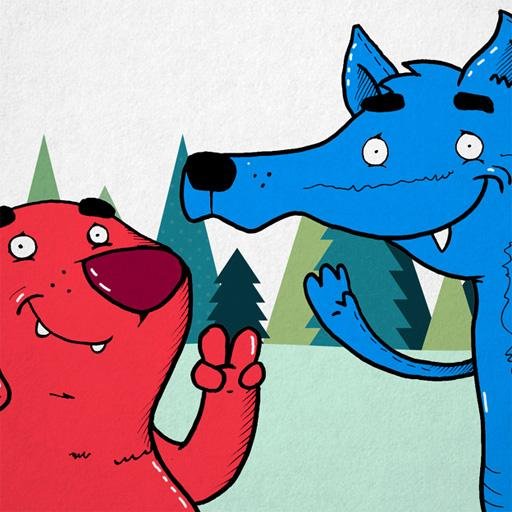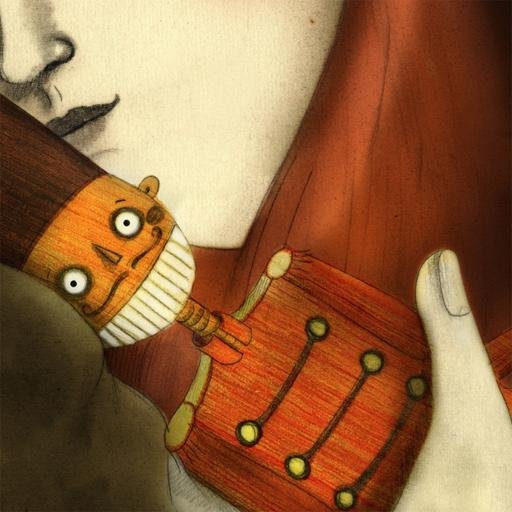Un lobo hambriento se encuentra con un perro casero que lo invita a acompañarlo a su hogar para una comida


| Name | El perro y el lobo |
|---|---|
| Publisher | Hugo Oliveira |
| Genre | Books Reference |
| Size | 14.5MB |
| Version | 1.0 |
| Update | June 21, 2025 |
| Get it On | Play Store |
| Report | Report Apps |
Preview
El Perro y el Lobo: Understanding Their Divergence
Once upon a time, legend has it that a famished wolf encountered a well-fed dog. Fascinated by the dog’s robust appearance, the wolf asked him how he came to look so healthy. The dog replied that life at a human’s side provided him with shelter and meals, but there was a trade-off. The wolf noticed the dog’s neck was worn where a collar had rubbed. Realizing this meant surrendering his freedom, the wolf chose to retreat into the woods.
Such fables highlight our enduring curiosity about the relationship between dogs (perro) and wolves (lobo). But beyond myths, what do biology and science reveal about their differences? This post explores their physical characteristics, behavioral traits, genetic disparities, and how domestication irreversibly shaped their evolutionary paths.
Shared Origins and Historical Divergence
Dogs and wolves share a common ancestry. Tens of thousands of years ago, wolves began interacting with humans, a relationship that eventually gave rise to domesticated dogs. This divergence is believed to have happened approximately 20,000–40,000 years ago, with long-term cooperation between early humans and certain wolf populations. Over time, behavioral traits favorable to cohabitation with humans (e.g., reduced aggression and increased sociability) were naturally or artificially selected, creating significant differences between the two species.
Today, dogs are classified as Canis lupus familiaris, a subspecies of the gray wolf (Canis lupus). Despite being close relatives, countless generations of separation have created distinct differences between these two remarkable canids.
Physical Characteristics
Size and Build
Wolves tend to be larger and more robust than dogs. An average adult gray wolf can weigh between 80 to 120 pounds, while most domestic dogs cover a broader weight range due to varying breeds. Wolves also have longer legs, larger paws, and thicker skulls, adaptations for hunting large prey and enduring harsh environments.
Dogs, on the other hand, come in an enormous variety of sizes and builds, from the diminutive Chihuahua to the towering Great Dane. This diversity is a direct result of selective breeding by humans over millennia, emphasizing aesthetics or specific roles like herding, guarding, or companionship.
Appearance
Wolves often display a uniform appearance with variations in coat coloration (gray, white, black, or brown). Their fur is dense and double-layered, providing optimal insulation in the wild.
Dogs exhibit astonishing diversity in coat types, patterns, and colors. From short-haired breeds like the Doberman Pinscher to fluffy, thick-coated breeds like the Samoyed, these variations stem from human influence rather than natural adaptation.
Behavioral Traits
Social Structures
Wolves are pack animals, relying on tight-knit social groups to hunt and thrive. Each member of the pack has a role, creating a clear hierarchy where cooperative behavior is essential.
Dogs, while also social beings, are more flexible in their social structures. Years of domestication have altered their dependence on strict hierarchies. Instead, they have adapted to living alongside humans or even independently among other dogs. Dogs’ pack mentality has evolved to focus on humans as their primary social group.
Hunting and Food Habits
An apex predator, the wolf depends on its physical prowess and strategic teamwork to hunt large prey like deer or elk. Fasting for days in between hunts is common.
Dogs, alternatively, no longer hunt for survival. Having been fed by humans for thousands of years, they have shifted away from survival-driven hunting behaviors. However, the remnants of these instincts persist, which can be seen in their playful nature of chasing and retrieving toys.
Communication Styles
Wolves possess an intricately layered form of communication, including howling, body language, and facial expressions. These signals maintain pack cohesion and territory defense.
Dogs have retained many communicative traits of wolves but have adapted some uniquely to human interaction. For instance, studies suggest dogs developed “puppy dog eyes” as a way to elicit nurturing responses from humans.
Genetic Differences
Despite their similarities, there exist notable genetic variations between dogs and wolves. Research shows that dogs have genes linked to reduced aggression, increased sociability, and a heightened ability to digest starches compared to wolves.
Dogs are more attuned to human communication than wolves, even surpassing other domesticated animals like cats. For example, dogs are better at following human gestures, such as pointing. This genetic and cognitive divergence highlights how deeply intertwined the evolution of dogs is with human companionship.
The Domestication Process
Domestication is arguably the most defining factor in separating dogs from their wild ancestors. Early human-wolf interactions likely began with mutual benefits. Wolves scavenged near human settlements, gaining easy access to food, while humans benefited from the wolves’ keen senses for protection or hunting aid.
Over time, humans began actively selecting wolves for traits like tameness, loyalty, and manageable size. The result? The birth of the domestic dog, a companion species tailored to coexist with humans.
Domestication not only reshaped their behavior and genetics but also altered their lifespans. Dogs generally live longer than wolves due to the care and shelter they receive from humans.
Dogs vs. Wolves in the Modern World
The Role of Wolves Today
Wolves remain critical players in ecosystems as apex predators, helping regulate prey populations and maintain biodiversity. However, human expansion and habitat destruction have threatened their survival, pushing conservation efforts to protect their populations.
The Role of Dogs Today
Dogs have transcended their historical utility roles (e.g., herders, hunters) to become trusted companions, service animals, and family members. While their wild instincts remain, dogs are far removed from the challenges their wolf ancestors faced.
Interestingly, some modern efforts involve hybrids of dogs and wolves, known as wolfdogs. This controversial practice raises ethical and ecological debates, as these hybrids straddle the line between domestic traits and wild instincts.
What We Can Learn from Their Evolutionary Journey
Dogs and wolves exemplify the remarkable effects of evolution and adaptation. The wolf’s survival-oriented instincts, combined with its intelligence, contributed to its enduring presence in the wild. Meanwhile, the dog represents how natural selection, combined with human influence, can create a symbiotic relationship that benefits both species.
Appreciating the unique paths of the perro and the lobo reminds us of the complex interplay between nature and human intervention. Whether you’re marveling at the howl of a wild wolf or enjoying the companionship of your furry friend at home, both deserve admiration for their incredible journeys.
Download El perro y el lobo
You are now ready to download El perro y el lobo for free. Here are some notes:
- Please check our installation guide.
- To check the CPU and GPU of Android device, please use CPU-Z app








